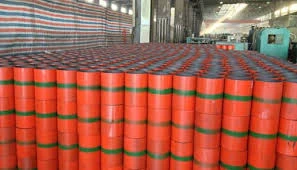- Afrikaans
- Albanian
- Amharic
- Arabic
- Armenian
- Azerbaijani
- Basque
- Belarusian
- Bengali
- Bosnian
- Bulgarian
- Catalan
- Cebuano
- Corsican
- Croatian
- Czech
- Danish
- Dutch
- English
- Esperanto
- Estonian
- Finnish
- French
- Frisian
- Galician
- Georgian
- German
- Greek
- Gujarati
- Haitian Creole
- hausa
- hawaiian
- Hebrew
- Hindi
- Miao
- Hungarian
- Icelandic
- igbo
- Indonesian
- irish
- Italian
- Japanese
- Javanese
- Kannada
- kazakh
- Khmer
- Rwandese
- Korean
- Kurdish
- Kyrgyz
- Lao
- Latin
- Latvian
- Lithuanian
- Luxembourgish
- Macedonian
- Malgashi
- Malay
- Malayalam
- Maltese
- Maori
- Marathi
- Mongolian
- Myanmar
- Nepali
- Norwegian
- Norwegian
- Occitan
- Pashto
- Persian
- Polish
- Portuguese
- Punjabi
- Romanian
- Russian
- Samoan
- Scottish Gaelic
- Serbian
- Sesotho
- Shona
- Sindhi
- Sinhala
- Slovak
- Slovenian
- Somali
- Spanish
- Sundanese
- Swahili
- Swedish
- Tagalog
- Tajik
- Tamil
- Tatar
- Telugu
- Thai
- Turkish
- Turkmen
- Ukrainian
- Urdu
- Uighur
- Uzbek
- Vietnamese
- Welsh
- Bantu
- Yiddish
- Yoruba
- Zulu
Specialized Clearance Connector for Enhanced Performance and Fast Installation
Understanding Special Clearance Couplings Essential Components for Modern Machinery
In the realm of mechanical engineering, the significance of effective power transmission cannot be overstated. One essential component that ensures the smooth operation of machinery is the coupling. Among the various types of couplings available, special clearance couplings stand out due to their unique features and applications. This article delves into the mechanics of special clearance couplings, their benefits, and their critical role in industries ranging from manufacturing to automotive.
What is a Special Clearance Coupling?
A special clearance coupling is designed to accommodate slight misalignments between connected shafts while allowing for a defined clearance. This type of coupling is particularly beneficial in applications where precision is crucial yet some flexibility is required. The clearance provided within the coupling allows for thermal expansion, movement due to vibrations, and other dynamic conditions that can affect machinery performance.
Unlike rigid couplings, which do not allow any misalignment, special clearance couplings can absorb shocks and tolerate minor misalignment issues without causing significant damage to the equipment or reducing efficiency. This quality makes them indispensable in many settings, including motors, pumps, and conveyor systems.
Key Features and Design Elements
One of the hallmark features of special clearance couplings is the clear distinction in design that allows for the necessary movement between connected shafts. These couplings may consist of various materials, such as steel, aluminum, or composite materials, each chosen based on the specific application requirements, including weight, strength, and resistance to environmental factors.
Several design options exist within special clearance couplings. For instance, some couplings may feature a spider or elastomer element that provides cushioning during operation. This elasticity not only aids in shock absorption but also minimizes wear and tear on the shafts. Additionally, the clearance in the coupling is critical—it ensures that even when vibrations occur, or thermal expansion takes place, the operational integrity remains intact.
Applications of Special Clearance Couplings
special clearance coupling

The applications of special clearance couplings are vast and diverse, extending across multiple industries. In the automotive sector, they are often used in drivetrains, where varying conditions can lead to misalignment. Similarly, in manufacturing, these couplings are crucial for connecting motors to shafts driving conveyor belts or other machinery, where slight misalignments can frequently occur due to mechanical wear or thermal effects during operation.
Another critical application is in pumps, especially those used in harsh environments where vibrations and fluctuating loads are common. Here, special clearance couplings can help maintain alignment integrity while managing stress, ensuring that the pumps operate efficiently without excessive wear.
Benefits of Using Special Clearance Couplings
The integration of special clearance couplings into machinery offers numerous advantages. Firstly, they enhance the reliability of equipment by reducing the risk of failure due to misalignment. This reliability translates to lower downtime and maintenance costs, which are vital for maximizing productivity in industrial operations.
Secondly, these couplings contribute to improved operational efficiency. With reduced wear on components, machinery can run smoother, leading to less energy consumption and better overall performance. Additionally, the design flexibility offers engineers the versatility to customize couplings based on their specific needs, optimizing the coupling for various speeds and loads.
Furthermore, special clearance couplings often feature easy installation processes and require minimal maintenance. These factors make them a cost-effective choice, especially in applications where regular maintenance can lead to operational disruptions.
Conclusion
Special clearance couplings play a vital role in the efficient operation of numerous mechanical systems across industries. By accommodating misalignment and providing cushioning against shocks, they enhance the reliability and efficiency of machinery. As industries continue to evolve towards more complex machinery designs, the importance of such couplings is likely to grow. Investing in the right type of coupling can lead to significant long-term benefits, ensuring that machinery runs smoothly and efficiently while minimizing costs associated with maintenance and downtime. Understanding the nuances of special clearance couplings is essential for engineers and technicians aiming to optimize performance in today's demanding industrial landscape.
-
Well Casing Extension Couplings – Applications and InstallationNewsJun.06,2025
-
Types of Crossover Subs in Drilling & CompletionNewsJun.06,2025
-
Key Features of High-Quality Tubing Pup JointsNewsJun.06,2025
-
Installation and Maintenance Tips for Steel Couplings for PipeNewsJun.06,2025
-
How to Select the Right Pup Joint for Oil & Gas OperationsNewsJun.06,2025
-
Applications of Stainless Steel Pipe CouplingsNewsJun.06,2025







